A lucky black cat
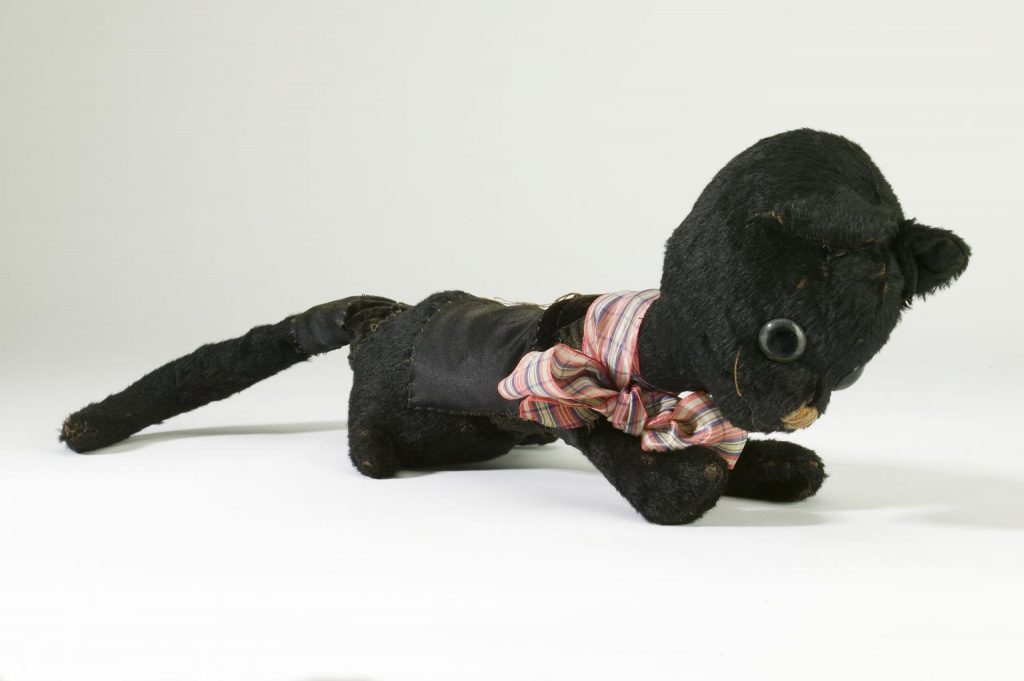
Witches are often pictured with a black cat in tow and lots of people are superstitious about these furry familiars. This could be the reason that black cats often take longer to rehome from animal shelters. However, local hero, pilot Jack Alcock, took this little cuddly critter, known as Lucky Jim, on the first ever non-stop trans-Atlantic flight as a good luck charm. He didn’t do it on a broomstick or a hoover though; he used a modified First World War Vickers Vimy bomber.
For more black cats in the collections, check out this blog post by our meow-keting assistants, Burnie and Kitty.
Is there anybody there?
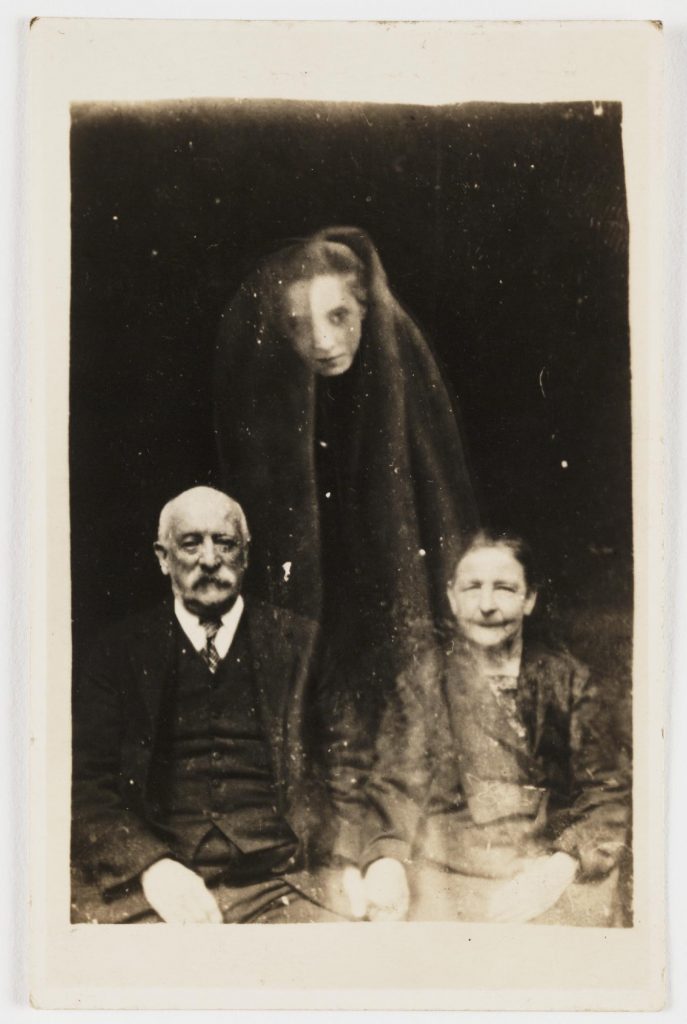
If you could talk to a loved one who had passed, would you? How about have a photo with them? These pictures may seem pretty hokey to those of us who live in a world of virtual reality and super special effects, but for people whose newest technological leap was the stills camera, these spoke to a need we still share today—to commune with the dead. Indeed, even after the photographer, William Hope, was found to be using double and triple exposure to create the illusion, he continued to practice. Perhaps, even these fake spirits gave comfort to families they so deeply needed.
You can read more and see several other examples on this blog post from the National Science and Media Museum.
Rocket the serial killer
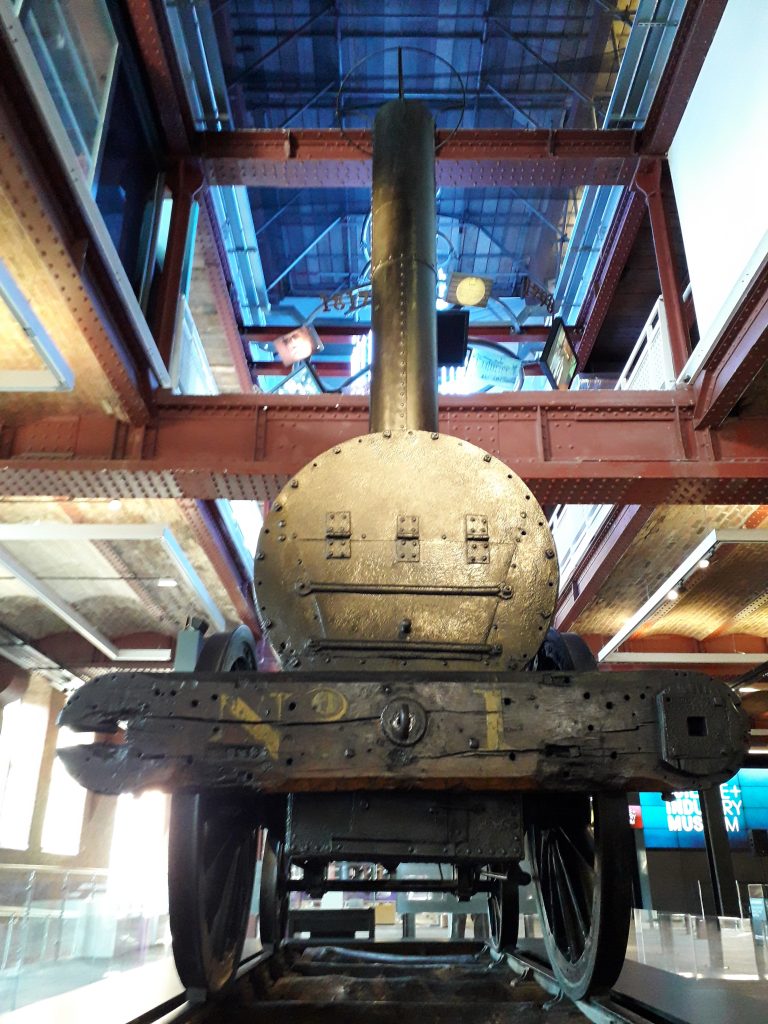
Jason, Freddy, Norman Bates… Rocket? Yes, everyone’s favourite iconic early steam engine is a serial killer worthy of its own slasher flick. On the opening day of the Liverpool and Manchester Railway in 1830, this demon machine famously ran over MP William Huskisson who died later that day from his wounds. Then, just a month later, Henry Hunter was projected under the wheels when the axel broke. Unsurprisingly, he was ‘found to be quite dead’. So, if you hear a creaking of pistons and perhaps a distant, wailing ‘choo, choo’ when you’re visiting, take a tip from us and run!
A Hair-Raising Head
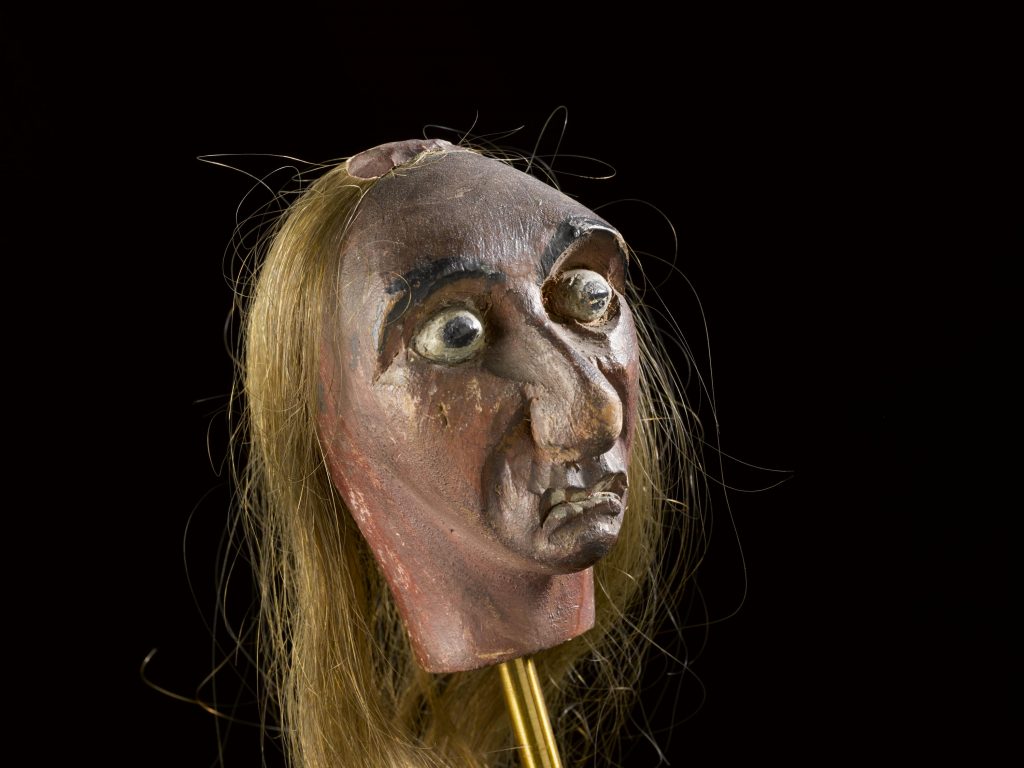
Formerly on display in Electricity: The spark of life, this handsome fella was used by turn-of-the-century scientists to teach the public about static electricity. The entertainer/demonstrator would charge up the metal pole by rubbing it between their hands then the power would travel up to the head and cause the hair to stand on end. For a final creepy twist in the tail? The hair is human.
One scary thing in the collection, ha ha haaaaa…
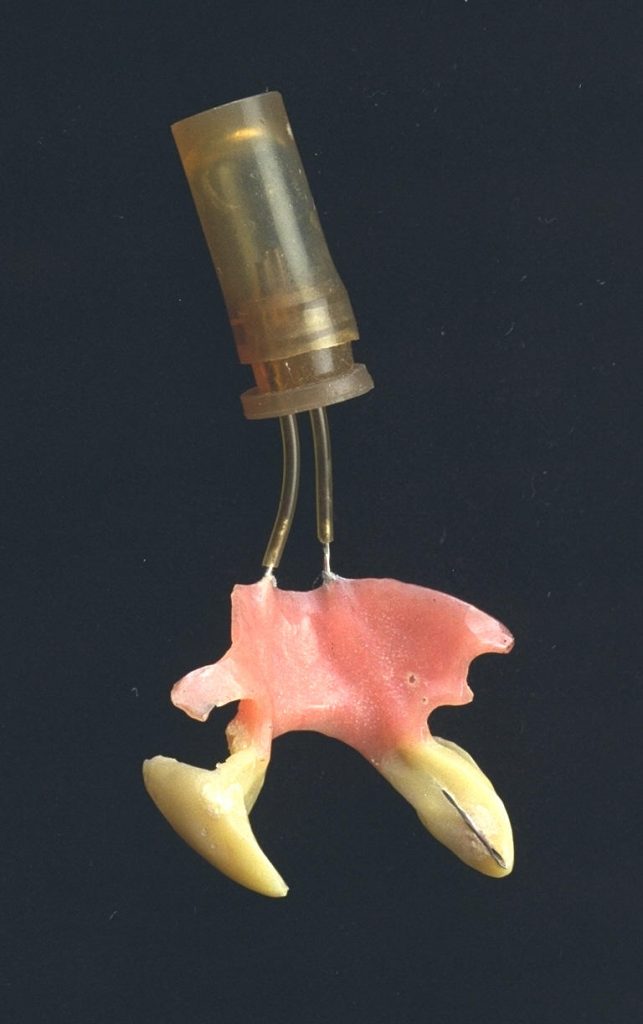
Forget the sparkly blood suckers of Twilight—if you were a creature of the night back in the 50s, 60s and 70s there was only one Dracula, and it was Christopher Lee. These teeth used in 1958’s Dracula are a perfect example of how old-school visual effects could use simple techniques. Fake blood was kept in the ‘reservoir’ and then when Lee pressed it against the roof of his mouth it would drip from the end of his fangs. It must have been pretty annoying to wear but they made for a perfect celluloid bite.
The fangs are part of the Hammer Collection, held by our sister museum in Bradford, the National Science and Media Museum.
Do you want to play?
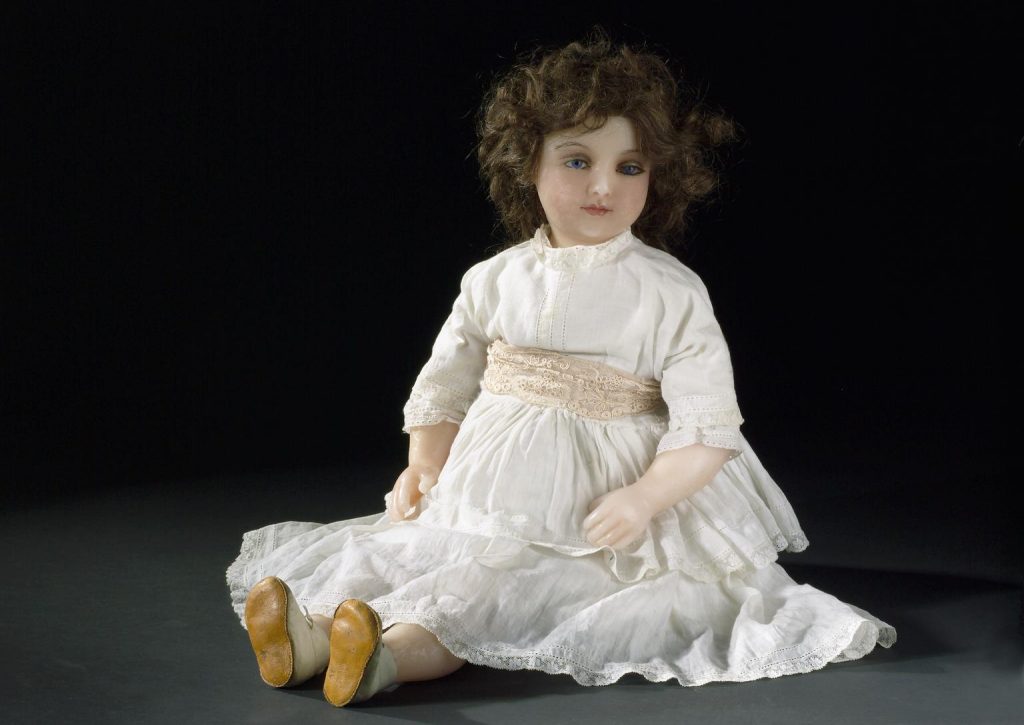
Clowns and dolls are on the surface all fun and games, but then you get the fear that that hunk of plastic in the corner or the guy in the big shoes might be secretly hiding a seriously stabby vibe.
Why? How come things like this doll or this clown, that are supposed to bring us joy, actually give us the creeps? Part of the answer might lie in their human-but-not-quite-human-enough faces. The snappily named uncanny valley concept, first proposed by the Japanese roboticist Masahiro Mori in 1970, suggests that the less like a human a face or very human a face is we prefer them. However, if something looks somewhere in the middle, we find it unsettling. There are a lot of factors, and popular horror icons such as Pennywise the Clown from IT and Chucky from the Child’s Play series don’t help, but as robotics and body modification become a bigger part of society, this theory may help explain why these things make us feel so uncomfortable.